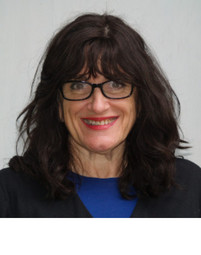5 Steps for Educational Grant Writing
Sometimes, innovative ideas for classroom projects fail to take off due to limited class budgets. As a result, teachers often look to outside sources for funding, leading them to embark on the process of educational grant writing. While writing grants can seem a daunting task to many, there are 5 simple steps that can help teachers ease through the process.
3 P’s: Teachers can follow the 3P rule, Project, Permission, and Plan before initiating grant writing.
- First, have a clear idea of the intended project.
- Second, obtain permission from principals or supervisors. This step is essential as some sources only fund projects that are supported by higher authorities.
- Third, plan the project carefully and in detail. Teachers must have answers to questions like why (need for project), what (mission statements, goals, objectives, requirements) and how (duration, cost, proof of project effectiveness), as this information can help them stay focused on their desired outcome.
Research: Thorough research can help teachers:
- Identify and generate a list of potential funders for their projects.
- Match projects with appropriate sponsors, whose focus and philosophy are similar to that of the projects’ objectives.
- Gather information regarding application procedures, rules, required styles of writing, history of approved proposals, and budgets. Teachers can prepare their grants using this information as guidelines.
- Identify contact personnel who can give guidance, clarify and answer questions regarding the process such as reviews, how and when decisions are made and methods of fund transfers.
Learn from others: Talk to teachers with experience writing grants, or those who have applied with the same sources for suggestions. They may help teachers understand elements that need to be included and pitfalls to avoid. Look through samples of accepted proposals for inspiration.
Allocate sufficient time: As writing grants takes time, teachers must remember to give themselves plenty of time for the process. The time can be spent wisely for researching, gathering supporting documents, writing, and reviewing the grants before submitting them.
Create a power team: With grant writing, it is crucial that teachers bring their best to the table. This can be done by forming a power team comprising of a researcher, writer, proofreader, and sometimes even a typist to help with the process. Having a power team in place ensures that:
- All guidelines, rules, and application procedures are thoroughly researched and followed during application.
- The information is presented clearly and objectively.
- Editing and revising of grants can take place simultaneously.
- Mistakes are identified and corrected, and that there is clarity of information in proposals before submission.
Grant writing can be rewarding as it can help teachers enrich students’ lives by presenting them with unique learning experiences. As student learning should reach beyond the limitations of classroom budget, it is important that teachers continue finding ways to incorporate innovative learning ideas, despite limited classroom budgets.
Explore more educational grant writing strategies with the 100% online PD Grant Writing class.
January 2021 Editor’s Note: This post was originally published in July 2015 and has been updated for accuracy and comprehensiveness.
 About the Author
About the Author
Ellen Paxton is a respected expert in education and best known as the Chief Learning Officer of Professional Learning Board. As a two-time National Board Certified Teacher, Ellen has successfully published and customized online professional development courses and Learning Management Systems for 20 years to help teachers meet their state continuing education renewal credit requirements. Through ProfessionalLearningBoard.com, RenewaTeachingLicense.com, and ConnectedPD.com, Ellen has established solutions and maintained partnerships with several accredited universities, higher education institutions, teachers’ unions and state Departments of Education while setting strategic direction that makes a difference and overseeing implementation of popular online PD for schools.

Comments are closed.